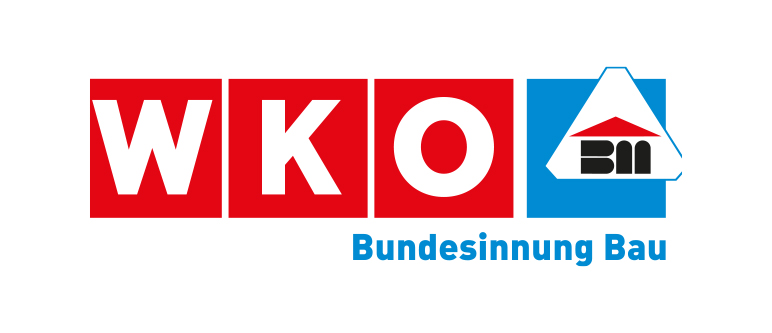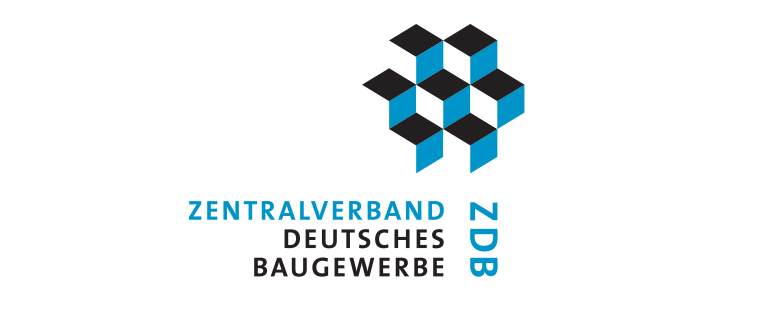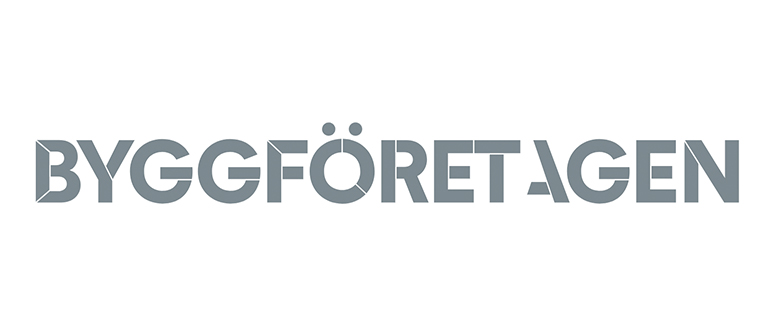Overall construction activity
In the past two years, the construction sector was a stabilising power for the economy. Adding 2020 and 2021, Germany’s GDP declined by 2.3 % in real terms. On the other hand, total construction investment in those two years rose in real terms by 3.2 %. The same picture can be seen in employment. Overall employment fell by 1.0 %, whereas a solid growth of 2.4 % in the construction sector could be seen.
2021 saw a new all-time-high of the volume of gross fixed capital formation construction of 414 billion Euro. The real growth rate in civil engineering (+1.6 %) was three times as high as in building (+0.5 %). Whereas house building showed a real growth rate of 1.3 %, non-residential buildings suffered a decline of 1.3 %.
Within the problems that the construction sector faces, two are predominant. First, the ongoing lack of skilled construction workers, which three of four companies see as a major problem for their own business. Second, the lack of construction materials, had a breaking effect on construction production in 2021.
Expectations for the construction sector in 2022 are still positive. At the beginning of the year economic research institutes predicted a growth rate of 2.5 %. Under the light of the war in Ukraine, this expectation needs to be downgraded. At this moment (end of March), it is problematic to figure out how the impact of the Russian invasion in Ukraine will influence the construction sector in Germany. In some materials (steel for reinforcement of concrete), nearly 50% of the material used comes either from Russia or the Ukraine.
In 2021, orders for the construction industry had a value of 94.6 billion Euro, 9.4 % higher as in the previous year. The volume of permits for new buildings (excluding civil engineering) came close to 110 billion Euros, 8.0 % more as in the previous year, especially due to rising construction prices. Gross fixed capital formation construction is expected to grow by 1 % this year in real terms. Due to massive rises in the prices for construction materials and energy, construction prices are likely to grow by 7.0 % this year.
Housebuilding
The dominating subsector (62% of total construction investment) reached an all-time low in 2009. Since then, it has been an ongoing success story. Until 2021 investment in real terms grew by 39%, the number of new flats and houses coming to the market doubled to more than 300,000 units.
The most important reasons for this development have remained unchanged in this period. The high number of immigrants, record low mortgage rates, extremely high demand for new flats in agglomeration areas, rising disposable incomes of private households and the search for investments with higher yields than the capital market has to offer.
Between 2010 and 2021 investment into new houses showed a very high growth rate of 8.7 % each year. Nevertheless, the subsector stands for just one third of total investment in the residential sector. House building is still dominated by rehabilitation and maintenance works, although the growth rate since 2010 was far less impressive with only 4.0 % each year.
The new federal government has set the stakes for the legislative period. First, it intends to raise the number of new flats and houses coming to the market to a level of 400.000 units per year. 100.000 of these flats should be created in the social housing sector. Therefore, the subsidies for this program will be doubled to 2 billion Euros this year and to 3 billion Euros in 2024. The federal states, responsible for this program, will add the same amount of money each year.
High on the political agenda is climate policy. Since 2005, all governments have wanted to reduce CO2 emissions from the building sector. Since the implementation of the subsidy programme in 2006, the state-owned KfW-Bank has pumped around 67 billion Euros into the market for investment into the existing housing stock (especially better insulation and modern heating systems). For new houses, the KfW-programme was abruptly stopped at the end of January 2022. New subsidies will only be given to the so called “KfW-40-Standard” which means, that the new building uses only 40 % of the energy of a “standard building”. This is a challenge for both the construction and the real estate companies, as construction costs per square metre are nearly 400 Euros higher than in the standard building.
One major problem to reach political aims in the number of finished flats is the lack of developed properties in the agglomeration areas. Prices per square metre of properties in these areas have risen by 155 % to 1.210 Euro in the past 11 years, whereas the sold area was reduced by one third.
It is expected that in 2022 about 315.000 flats or houses will be finished. Once again, demand will be clearly missed. Therefore, prospects remain positive despite the future consequences of the Corona pandemic or the war in Ukraine.
GDP 2020
BILLION
POPULATION 2020
Total investment in construction in 2021
BILLION
Non-residential construction
Production in this sector is dominated by private investors and therefore closely linked to the overall economic development. Surprisingly, the output in this sector was not hit as hard by the consequences of the Covid-19 pandemic as has been feared. 2021 registered a decrease of 1.1 % in real terms. The forecast for 2022 (stagnation) is a little bit better. Building permits for this subsector grew last year, and new orders in the construction industry had a surplus of 20 %, combined with a record level of the order backlog.
These figures have to be seen in the context of the war in Ukraine and the sanctions of both the EU and Germany against Russia. Therefore, it is not clear, if the proposed GDP growth rate of more than 2 % in real terms will be reached in 2022. If the sanctions (and possible retaliations from Russia) will cut that growth, a similar cut in the investment plans of the companies might be seen.
Investment by the public sector stands for only 15 % of non-residential buildings, limiting the influence of this sub-sector for production. Although tax revenues showed a clear upswing in 2021, and prognoses for another good growth this year, especially the local authorities will cut their investments. This cannot be compensated for by the federal government and the federal states.
Civil engineering
Since the turnaround in 2016, investment into civil engineering had a very dynamic development with an aggregated growth rate of more than 15 %, clearly higher as in the building sector with nearly 12 %. That growth can be based on the effect that not only the federal government but the local sphere as well widened their investment especially into traffic infrastructure.
The new federal government has set its focus on climate policy and announced that investment into the German railway system will benefit to a large extent from subsidies by the federal government. The annual value of the sum will rise from 5.6 billion Euros in 2021 to more than 8 billion in the years to come. The focus of the additional money will be on repair and maintenance works in the existing network. With this investment, the government intends to shift more passengers and freight to rail.
Local communities are another important player in infrastructure. After years of cutbacks in their budgets, they expanded their investment from 2015 to 2020 by one quarter, which was about 15 % in real terms. Contrary to the federal government, it is very likely that local authorities will cut spending for infrastructure this year.
| Per cent variation of investment in real terms on previous year | |||||||
| investment Mln. € fixed prices | |||||||
| Sectors | 2021a | 2018 | 2019 | 2020 | 2021a | 2022a | |
| 1. | Building | 282,200 | 2.4 | 1.1 | 2.5 | 0.5 | 1.1 |
| 1.1. Housebuilding | 203,300 | 3.0 | 1.5 | 3.4 | 1.3 | 1.5 | |
| 1.1.1. New | 71,900 | 4.6 | 4.5 | 1.4 | 2.3 | 1.5 | |
| 1.1.2. Renovation | 131,400 | 1.2 | 4.0 | 1.3 | 0.7 | 1.4 | |
| 1.2. Non residential (c) | 78,900 | 1.0 | 0.3 | 0.2 | -1.3 | 0.1 | |
| 1.2.1. Private | 65,200 | 1.1 | 0.3 | -1.1 | -1.1 | 0.0 | |
| 1.2.2. Public | 13,737 | 1.0 | 0.1 | 6.6 | -2.2 | 0.5 | |
| 2. | Civil Engineering | 44,500 | 3.6 | 0.6 | 2.6 | 1.6 | 0.4 |
| (1 + 2) | Total Construction | 326,700 | 2.6 | 1.1 | 2.5 | 0.7 | 1.0 |
| a: estimate - b: forecast - c: incl. R&M | |||||||
| Number of building permits in residential construction | |||||||
| 2018 | 2019 | 2020 | 2021a | 2022b | |||
| single dwelling | 110.638 | 112.211 | 118.798 | 126.087 | 120.000 | ||
| collective dwelling | 180.137 | 188.481 | 189.256 | 193.647 | 190.000 | ||
| other types of dwelling | 56.035 | 59.801 | 60.385 | 61.180 | 60.000 | ||
| Total | 346.810 | 360.493 | 368.439 | 380.914 | 370.000 | ||
| (Collective dwellings and other types of buildings: in number of flats) | |||||||


































